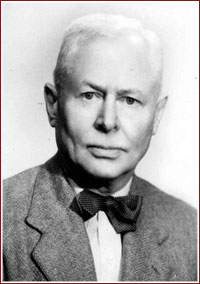
CHAPTER 1: U.S. INTELLIGENCE AND THE WHITES
Religious infrastructures as bridgeheads into Russia. Part 1
This chapter describes the early collaboration between U.S. intelligence and White forces in their common fight against the Bolsheviks, which startedtowards the end of the short-lived Provisional Government of Alexandr Kerenskii in 1917. When the Russian Civil War was lost by the White-Entente alliance, the U.S. supported White émigrés that had settled in the West, particularly in Germany and France, the centers of White emigration in the interwar period. To that effect, the U.S. predominantly extended aid to staunchly Orthodox émigré figures, since they saw godless Bolshevism as an assault on Christian supremacy. Furthermore , the U.S. continued to liaise with representatives of the repressed Russian Orthodox Church inside Russia, which it saw as an important ally in the fight against the atheist Soviet Union from within.
When Poole finally left Russia in the autumn of 1919 as American chargé d’affaires, he returned to the State Department, where in September of that year he took over the leadership of the newly formed Russian Division from Basil Miles. Poole held this position until 1923, when the Russian Division was transformed into the Division of Eastern European Affairs under his supervision.¹⁰⁴
Since any official U.S. presence was no longer tolerated in Russia, intelligence from inside was increasingly hard to get. Thus, with the defeat of the Whites and large numbers of them ending up in Western exile, U.S. efforts shifted to strategically supporting certain elements of the White intelligentsia abroad in the hopes of gaining insight into Russia, as well as integrating them in their own anti-Soviet propaganda apparatus. The Young Men’s Christian Association (YMCA) played a seminal role in supporting this apparatus by funding arch-reactionary, anti-Soviet and mostly Orthodox Christian intellectuals, as well as various Orthodox and ecumenical organizations and institutions across Europe, while its publishing house disseminated a steady stream of rabidly anti-Bolshevik tracts, many of them ending up in the Russian literary canon.
John Mott, Paul Anderson & Ethan Colton
Poole was reportedly in touch with Paul B. Anderson (1894–1985), who was tasked with
overseeing the operations of the Young Men’s Christian Association (YMCA, 1844–present) in revolutionary Russia, an organization that still haunts the country. By 1917, the YMCA had been operating for 17 years in Russia, making it one of the oldest U.S. footholds in the country and, at that point, probably the most successful American religious incursion.¹⁰⁵
Anderson had come to Russia in the course of the 1917 Root Commission, during which he served as a personal secretary to the mission delegate, John R. Mott (1865–1955).¹⁰⁶ Mott, at the time a U.S. YMCA secretary and a founder of the World Student Christian Federation, was a devout Methodist, who had paved the way for the YMCA’s expansion into Russia at the turn of the century. Mott’s restless traveling and missionary activity, as well as his ecumenical efforts, made him an important liaison in religious matters. As such, Mott had met President Wilson on several occasions, most notably in January 1915, when Wilson gave his blessing to a YMCA deployment among POWs in Europe.¹⁰⁷ Mott had worked with Secretary of State Robert Lansing prior to the Root Commission, such as creating the framework of the 1916 U.S. Mexico Commission.
According to Miller, both Mott and Anderson had grown up in Iowa, where Anderson became Mott’s protégé within the YMCA,¹⁰⁸ and subsequently, “spent his 48-year career working with the YMCA’s International Committee.”¹⁰⁹
Headquartered in the Winter Palace in Petrograd during the Root Commission, “Mott initiated a series of conversations with influential Orthodox leaders,” according to Miller.”¹¹⁰ For example, in November 1917, Mott attended the inaugural ceremony of Patriarch Tikhon, to whom he was introduced by the Wilson whisperer, Charles Crane. Tikhon gave his blessings to the YMCA’s activities and subsequently served as a liaison to the senior Russian YMCA secretary and Methodist, Ethan T. Colton (1872–1952), who developed contacts with Orthodox dignitaries in Russia.¹¹¹
According to Miller, “In the years to follow Tikhon passed instructions to Metropolitan Evlogii [Eulogius] in Berlin via Colton.”¹¹² In the interwar period, Colton would serve as executive secretary of the YMCA World Services (1925–1932), during which time all YMCA-Press correspondence was directed to Colton in New York.¹¹³
Mott’s ecumenism consisted in rallying for a theist front against atheist Bolshevism. According to Matthew Lee Miller:¹¹⁴
The quintessence of Mott’s views was formulated by him in 1917 at a meeting with an
Orthodox metropolitan and bishop of the Roman Catholic Church in Petrograd: “We are representatives of three great Christian denominations—Russian Orthodoxy, Roman
Catholicism and Protestantism. We have one Christ and we have common enemies.
Definitely, we should understand each other better and learn to work together.”
Russian Student Christian Movement & Russian YMCA (Mayak)
Both, Mott and Anderson had dedicated their lives to the YMCA, originally founded in England by Sir George Williams in 1844 and initially geared at evangelizing young urban men working in the industrial trades. Already by 1851, the YMCA had branched out worldwide, including to the U.S., whose subsidiary was behind the organization’s expansion into Russia at the turn to the 20th century. Around that same time, the YMCA changed its course from strictly confessional to concentrating more on missioning through practical outreach than divisive theological debates. Within an emerging fad known as muscular Christianity, the YMCA started to offer a wide range of extracurricular and sportive activities aligned with Victorian values, such as patriotism, virility, heroism and athleticism.¹¹⁵
It's club houses were somewhat of a hybrid between a gentlemen’s club, an educational institution, a missionary and a gym, whose worldly flair, bustling activities and impeccable infrastructure did not fail to entice in its targets—intellectually curious young men from the lower middle class to the upper crust. Besides its missionary underpinnings, the YMCA was also strategized as a bulwark against a creeping atheism as well as an “antidote to political radicalism.”¹¹⁶
In this phase, where social service and war relief played an increasing role, the organization developed a Christian ecumenical character, particularly in sections where other Christian denominations, such as Russian Orthodox or Catholic forces, prevailed.
The way for a Russian YMCA branch was paved with the foundation of the Russian Student Christian Movement (Russkoe studencheskoe khristianskoe dvizhenie, RSCM) in 1899, which Mott helped to establish during a trip to Finland, then part of the Russian Empire. The RSCM was intended as a future Russian branch of the World Student Christian Federation, which Mott had founded in 1895 This group was a Protestant-driven ecumenical umbrella organization with local off-shoots worldwide, which, along with the World YMCA, is headquartered in Geneva, Switzerland. In his missionary efforts, Mott focused on the large universities in Moscow and St. Petersburg, where his lectures to students were a great success, and bible study circles sprang up in a number of cities with about 500 members in 1913.¹¹⁷
A year after the foundation of the RSCM, in 1900, a YMCA branch was established in
St. Petersburg, guided and funded by the American philanthropist James Stokes and managed by his emissary, Franklin A. Gaylord¹¹⁸—this was the so-called “Mayak” (“Lighthouse”) movement, also known as the Society for Cooperating with St. Petersburg Young Men in the Attainment of Moral and Physical Development.¹¹⁹ Throughout their existence, the RSCM and the Mayak were closely related sister organizations.
The Mayak was a great success, particularly among aristocrats, artists, and the upper
bourgeoisie. Under the auspices of Empress Alexandra Feodorovna,¹²⁰ Prince Alexandr
Petrovich of Oldenburg assumed the title of Honorary Trustee,¹²¹ while its Committee was led by the Russian statesman Nikolai Tagantsev. Famous Russian cultural figures were members and patrons of the YMCA; among them were Alexandr Scriabin, Igor Stravinskii, and Ivan Bunin.¹²² By the time of the October Revolution, membership had reached almost 4,000 people and the annual budget totaled almost 100,000 rubles.¹²³
A new phase arrived with the beginning of WWI, with American intelligence trying to get a
stronger foothold in Russia, and, for that purpose, significantly the existing YMCA infrastructure expanded.¹²⁴ That the YMCA’s presence in Russia should be bolstered had been already proposed by the Root Commission to Russia in May 1917 According to Davis and Trani:¹²⁵
Conferences with Russian Provisional Government leaders such as Prince Lvov and Kerenskii led to a decision by Mott and other YMCA officials to “throw every available resource” into army work without delay, and YMCA secretaries were dispatched to the major garrison cities. From the summer of 1917 to March 1918 many thousands of Russian soldiers became familiar with the YMCA. The organization’s huts supplied meeting rooms, books, writing paper, and more intangible things … in an attempt to improve the morale of the troops [to continue fighting in the war against the Central Powers].
Anderson stayed in Russia when the Root Commission left—including Mott—first in Petrograd, then in Moscow. Here, he was appointed by “Chief Ethan T. Colton … to supervise all the work of the YMCA in Russia.”¹²⁶
His official titles between 1917 and 1918 were Director of War Prisoners’ Aid in Russia and Siberia, as well as Director of Repatriation Service for War Prisoners.¹²⁷ Anderson was able to keep up the YMCA’s presence in the country for a while, however, investigators grew wary of his work among POWs. From September to October 1918, Anderson was shortly detained in Lubyanka prison, but he was released quickly.¹²⁸
In the autumn of 1918, Anderson returned to the U.S., while the YMCA personnel under him left Russia as well, many of whom moved on to support the short-lived contending White regimes in the Russian periphery. However, there are reported instances of YMCA activity inside Soviet Russia during the interwar period.¹²⁹
Since YMCA activities inside Bolshevik Russia were largely interrupted in 1918, its operations were resumed in Europe, where many of its members had exiled to following the Russian Revolution. To lead the YMCA’s anti-Bolshevik assault from abroad, both Mott and Anderson became heavily involved in the revival of the Russian YMCA infrastructure in exile in the form of the YMCA-Press, the RSCM, as well as other organizations with a religious outlook that served as hubs to enlist the Russian émigré intelligentsia in the surging anti-Soviet cultural war.
YMCA support of these organization served several purposes: to bring the Russian émigré
intelligentsia under the control of the YMCA, and, by supporting expatriates holding religious, reactionary and czarist views, to keep it away from the temptations of progressive ideologies. Furthermore, the establishment of religious organizations supported the survival of the Orthodox church in exile, which in turned served as a nexus into Russia—a stratagem that came to play a vital role in undermining the Soviet Union from within.
At the beginning of the 1920s, White émigrés had gathered mostly in European capitals, such as Berlin, Prague, Belgrade, Sofia and Paris, and it was predominantly in these cities that exile organizations thrived and where the YMCA tried to get a foothold among exiled Russians. Anderson was stationed in Berlin between 1920 and 1924, where he oversaw the YMCA work among Russian émigrés in Europe.¹³⁰ Under Anderson’s supervision, the YMCA supported a broad range of “educational” and publishing endeavors in several European capitals, which were spearheaded by staunchly Orthodox and anti-Bolshevik Whites. Overall, these were projects geared at maintaining a theist common sense among the émigré intelligentsia, particularly the philosophically inclined.
In 1922 while in Berlin, Anderson became acquainted with a group of White ideologues
including Nikolai A. Berdiaev (1874–1948) and Ivan Ilyin (see chapter on Ilyin). The YMCA would provide startup capital for their respective endeavors. Both had been exiled on one of the famous “philosophers’ ships” that brought more than 200 unwanted intellectuals expelled by the Soviet Union to Europe. As we will see, it is not accidental that almost 100 years later Vladimir Putin would name these two Whites as his favorite “philosophers” at a Valdai speech.¹³¹ Also, others exiled on the philosophers’ ships wound up on the YMCA payroll or received support by the organization, which apparently had a particular penchant for Marxist apostates, monarchists, religious fanatics and (clerical) fascists.
In the case of Berdiaev, the YMCA funded the creation of a Religious-Philosophical
Academy (Religiozno-filosofskaja akademija, RPA), a revival of the Academy of Spiritual Culture that he had run in Moscow from 1919 to 1922.¹³² Berdiaev, a Marxist turned Orthodox fanatic, had been detained twice for subversive activities before being exiled to German; the first time was for his alleged connections to the counter-revolutionary Tactical Center (see below). In his writings, Berdiaev pledges a sort of neo-medievalism, in which clerical and aristocratic hierarchies should rule again—at times even likening himself as a “grandson of the crusaders”— and he found purpose in fighting rationalistic Enlightenment and godless Bolshevik materialism.¹³³
According to Robert Chadwell Williams, “Paul Anderson and others had been for some time aware of the ‘religious revival’ going on in Russia under the aegis of Berdiaev’s Academy of Spiritual Culture,” and they were so appreciative of Berdiaev’s religious anti-Communism that they went to great length to accommodate his projects. Anderson hurried to find fitting premises for the offices and classrooms of the Academy at a prestigious Berlin address (Reichstagsufer).¹³⁴ The RPA opened doors in late November 1922, a mere two months after Berdiaev’s arrival, and featured, among others, the White propagandist Ilyin as one of its lecturers.¹³⁵ The Academy’s program stated that “Only a religious resurrection can save Russia and revivify Europe and the whole world."¹³⁶
If Anderson was not already familiar with the clerical fascist tendencies of Berdiaev and Ilyin, their publications in those years should have made it clear. For example, in 1923, Berdiaev published The Philosophy of Inequality, in which he makes the case for an aristocratic hierarchy as the God-given form of government. In his eyes, inequality was not something to overcome, but a desirable state worth maintaining, while equality was at odds with the cosmic order.¹³⁷
The YMCA also provided startup funds for the Russian Scientific Institute (Russkii Nauchnyi Institut v Berline, RSI), where Ilyin taught throughout the interwar period.¹³⁸ A staunchly anti-Soviet research center under the auspices of the German Foreign Office that existed from 1923 to 1934, the RSI brought together key figures of the White intelligentsia.¹³⁹ The start-up capital for the opening of the RSI was provided by the YMCA.¹⁴⁰ Berdiaev initially taught the history of Russian philosophical thought at the RSI, while he and the White figurehead Pyotr Struve (see below) became members of the RSI’s scientific council.¹⁴¹
YMCA-Press
The YMCA also became heavily involved in the publication of Russian-language literature and magazines that catered to the exile community but also served as tamizdat literature—literature published abroad and smuggled into Russia. The YMCA-Press took a seminal position in the YMCA publishing apparatus and, since its beginnings in the early 1920s, had been at the forefront of the cultural Cold War against the Soviet Union. In the period leading up to WWII, about 250 books were published by YMCA-Press, among them many religious tracts and works by anti-Bolshevik émigré writers. Many of these authors would end up in Russia’s literary canon, among them Nikolai Berdiaev, Sergei Bulgakov, Semyon Frank, Konstantin Leontiev, Ivan Ilyin, Vasilii Zenkovskii and Vladimir Ilyin.
At the beginning of the Russian Civil War, no dedicated Russian-language press in the West geared to reach large audiences existed. Therefore, publications resorted to using existing YMCA-affiliated publishers, such as the Association Press (with seats in Switzerland) and the U.S., which in the early 1920s sporadically published Russian titles. It took until 1923 for the YMCA-Press (YP) to finally open doors in Prague, an operation in which Mott and Anderson once again played key roles.¹⁴² Mott, now in New York, had been approached by a group ofémegrés to establish a publishing house in Europe. Czechoslovakia was deemed suitable, since it was initially an important gathering place for the White intelligentsia. At that point, the YMCA still had a network of people inside Russia that could distribute its books there.¹⁴³
The YP’s time in Prague, however, was very short-lived, and “At the end of 1923, the publishing house moved to Berlin for economic reasons,” according to Gurevich.¹⁴⁴ That year, Soviet authorities announced an embargo on the entry of literature, which no longer could be legally shipped to Russia. In Berlin, the YP came largely under the control of Paul B. Anderson, and, according to Stroop, Berdiaev became a senior editor of YP in 1923.¹⁴⁵ According to Miller, “Anderson established the organizational foundation for the YMCA Press, while Berdiaev provided its intellectual direction.”¹⁴⁶
YP’s time in Berlin was also shortcut thanks to Germany’s economy in crisis and few
employment opportunities for Russians. Starting in 1924, tens of thousands of Russian émigrés moved to France, where workers were needed, including Berdiaev and Anderson. Following the emigration wave, the YMCA-supported operations also relocated to France, where once again Anderson took the lead; he was stationed there until 1941.
Russian Student Christian Movement
In the early 1920s, the YMCA was also instrumental in the revival of the Russian Student
Christian Movement (RSCM) in exile, with branches in several European cities (Prague,
Belgrade, Sofia, Berlin and Paris) and joined by many of its former members. Since May 1923, the magazine “Spiritual World of Students,” subtitled “Bulletin of the Russian Christian Student Movement in Europe,” appeared in Prague on the initiative of the Russian exiled priest Sergei Nikolaevich Bulgakov (1871–1944). Commonly known as Vestnik, the journal still exists today.¹⁴⁷
However, the seminal event for the RSCM’s recreation was a grand-scale congress at Přerov Castle, Czechoslovakia, in October 1923, convened with financial support from the YMCA and the Protestant Federation.¹⁴⁸ The event, mainly organized by Alexander Nikitin, a member of the Sofia RSCM circle, brought 33 youth delegates together with the emerging figureheads of the Movement. Among them were the former RSCM president Vladimir Martsinkovsky, Sergey Bulgakov, Anton Kartachev, Nikolai Berdiaev and Vasilii Zenkovskii, who was elected president at the congress—a position he held for the rest of his life.¹⁴⁹
YMCA representatives were also present; among them were the Swiss YMCA secretary, Gustav G. Kullmann (1894–1961), “a Swiss Reformed Christian who eventually converted to Orthodoxy,” who would later play a leading role in the RSCM and the YMCA-Press;¹⁵⁰ and the American Donald Alexander Lowrie (1889–1974), a YMCA sycophant throughout most of his life, who from 1922 to 1928 was deployed to Czechoslovakia to rally students for anti-Bolshevik agitation and who, during WWII, would work with Paul B. Anderson with Russian, Czech and Bulgarian refugees in France.¹⁵¹
Brotherhood of St. Sophia
The éminences grises of the revived RSCM and of the YMCA-Press were organized in a more elite group. The Brotherhood of St. Sophia (BSS) was a religious circle that was also revived following the1923 Přerov congress and most of whose members had been heavily engaged in anti-Bolshevik subversion during the Russian Civil War.¹⁵² The BSS was originally founded by several religious figures in late 1919 in Russia, notably Sergey Bulgakov and Anton V. Kartashev (1875–1960) , who were also among those who re-founded the BSS in exile.¹⁵³
Bulgakov had a long history of political engagement, dating back to the beginning of the
20th century. At first a Marxist, he changed his course towards right-wing politics, and,
alongside Berdiaev and others, became involved in the illegal political organization “Union of Liberation“ (Soiuz Osvobozhdeniia) in 1903, founded by Pyotr Struve, striving for a constitutional monarchy. Following the 1905 revolution, Bulgakov turned more and more towards religion, eventually being ordained a priest in 1918 His anti-Bolshevik writings landed him a ticket on the philosophical steamer alongside Ilyin and Berdiaev.
Anton Kartashev, the last Ober-Procurator of the Governing Synod of the Orthodox Church in Russia and Minister of Religion in the Russian Provisional Government, had written the
provisional charter for the Brotherhood in 1918, which was approved by Patriarch Tikhon. In January 1919, he fled Russia, first for Estonia to join Nikolai Yudenich as Minister of
Confessions and, in 1920, to Paris.
The revived Brotherhood wanted to bring Orthodox Christians under its sway by offering a
variety of activities, including religious education, lectures by religious thinkers, preaching and cultural initiatives. The BSS was strictly hierarchical and resembled a religious order, with brothers being divided into novices, disciples and elders, who all had sworn a religious vow. A leading council was established consisting of 12 elders. Bulgakov was elected as Council Chairperson and Vasily Zenkovsky as Council Secretary.¹⁵⁴ According to Burega:¹⁵⁵
A significant part of the audience [at the October congress], as Archpriest V. V. Zenkovsky
recalled, belonged to the Brotherhood of Saint Sophia back in Russia. During their meeting, the idea of reviving the Brotherhood in exile was expressed. ... The reconstituted
Brotherhood included A. V. Kartashev, Prince Gr. Trubetskoi, A. Elchaninov, Archpriest S.
Bulgakov, P. I. Novgorodtsev, G. V. Vernadskii, P. B. Struve, P. A. Ostroukhov, I. I. Lappo,
S. S. Bezobrazov, L. A. Zander, M. V. Shakhmatov, V. V. Zenkovskii, N. A. Berdiaev, S. L.
Frank, and B. P. Vysheslavtsev. The brotherhood received the blessing of Metropolitan
Eulogius, who approved the Charter of the organization. The first paragraph of this document stated that the Brotherhood’s task was to convert “mainly lay cultural forces to the service of the Orthodox Church ….”
The RSS operated in Prague until mid-1925, after which it was transferred to Paris, where it remained active until Bulgakov’s death in 1944.¹⁵⁶
There is a considerable overlap between RSS members and the group the YMCA-Press came to support. These members partly knew each other since the turn of the century and had long been active in subversive political activities. As mentioned above, Nikolay Berdiaev, Sergei Bulgakov and Pyotr Struve, all Marxist apostates, knew each other from the early 1900s, when they all participated in the constitutional monarchist Union of Liberation. Berdiaev, Struve, Bulgakov and Semyon Frank had all contributed to a seminal publication in 1909, Vekhi (“Landmarks”), which argued for religion as the fundament of a new Russia—a Cold War propaganda favorite.¹⁵⁷
Furthermore, several of the BSS’s members had been involved in anti-Bolshevik activities together during the Russian Revolution. Pyotr Struve, Anton Kartashev and Grigory Nikolaevich Trubetskoy had been members of the British-supported anti-Bolshevik underground organization Right Center (Pravyi tsentr), a political association of various right-wing, monarchist, military and financial interest groups, which emerged in November 1917 in Moscow.¹⁵⁸
The Right Center was set out to support the establishment of the Volunteer Army and managed to raise substantial funds among counterrevolutionary supporters.¹⁵⁹ Although the Right Center was only shortlived, because of internal contradictions and persecution, many of its members joined the quasi-successor organization (All-Russian) National Center (Vserossiiskii Natsional’nyi Tsentr, 1918–1920), including Struve and Kartashev, “a self-proclaimed ‘underground organization formed in Russia for the struggle against Bolshevism,’”¹⁶⁰ many of whose adherents were imprisoned for subversive activities.
For example, the former Mayak figure Nikolai Stepanovich Tagantsev (1843–1923) was sentenced to death for his anti-Bolshevik plotting in the framework of the National Center and the Petrograd Combat Organization (Petrogradskoi boevoi organizatsii) in 1923. An investigation found that in exchange for providing intelligence, the leadership of the National Center received up to 500,000 rubles a month from the British intelligence agent Paul Dukes.¹⁶¹
By the spring of 1919, the leaders of various anti-Soviet underground groups and organizations decided to create a single coordination center, to develop a joint action program for all the participating organizations. This resulted in the creation of the Tactical Center (Takticheskiy tsentr) in April 1919, which included the National Center, the Union of Revival and the Council of Public Figures, and created a special military commission in order to communicate with the underground military organizations operating inside Soviet Russia and with the White forces of Kolchak and Denikin.
Pyotr Berndgardovich Struve
With the defeat of the Whites in the Civil War, many figures involved in the various counterrevolutionary “centers” regrouped in exile. Notably Pyotr Berndgardovich Struve (1870–1944) helped rebuild the National Center in Paris 1921 as the Russian National Committee (Russkii Natsional’nyi Komitet), committed to the armed struggle against Soviet Russia.¹⁶² In this effort, he was joined by other right-wing anti-Soviet figures, such as Anton Kartashev, Vladimir Dmitrievich Nabokov and Vladimir L’vovich Burtsev.¹⁶³ Struve had joined the Volunteer Army, and, during the Russian Civil War, in 1919, he represented the anti-Bolshevik government of General Anton Denikin. When General Pyotr Wrangel took over the commando of the Whites in early 1920, Struve served as Wrangel’s foreign minister.¹⁶⁴ Following the defeat of the Whites in November of that year, Struve emigrated to Paris—where he remained until his death in 1944—becoming deeply enmeshed in right-wing émigré politics and publishing. From 1925 to 1927, Struve edited the White propaganda organ Vozrozhdenie (“Renaissance,” 1925–1940). In 1926, he was elected chairman of the Russian Foreign Congress (Rossiiskii Zarubezhnyi s”yezd), which tried to rally the Russian diaspora under the banner of Grand Duke Nicholas Nikolaevich as a legitimate heir to the throne in exile.
Struve was married, since 1897, to Antonina (Nina) Aleksandrovna Gerd (1867–1943) and had five sons, most of whom also became heavily involved in anti-Bolshevik émigré activities. The oldest son, Gleb Struve (1898–1985), was a veteran of the Volunteer Army, which had a steep academic career in the U.S. after WWII, publishing hundreds of books by Russian authors suppressed in the Soviet Union.¹⁶⁵ The second son, Alexey (sometimes Alexis) Petrovich Struve (1899–1976), was a bibliographer and ran the Russian Library in Paris. The third son, Konstantin Struve (1900–1948; Archimandrite Savva), a White Army veteran, founded the Brotherhood of St. Sergius in Paris, then lived in the Orthodox (ROCOR) monastery of St. Job of Pochaev in Ladomiroff (Czechoslovakia). The fourth son, Lev Struve (1902–1929) was a lawyer and journalist. His youngest son, Arkadii Struve (1905–1951), was a known figure in the RSCM and the secretary of Archbishop Sergius (Korolev), who was closely affiliated with Metropolitan Eulogius. Anti-Bolshevik agitation also became a trademark of later descendants of the Struve family. Notably, Nikita Struve (1931–2016) carried on the work of the YMCA-Press in the Cold War and beyond.
One frequently encounters the name of the princely Trubetskoi family in the context of the various “centers,” the BSS and YMCA-affiliated anti-Bolshevik activities. Aforementioned Grigorii Nikolaevich Trubetskoi (1873–1930, Clamart, France) joined the ranks of the Right Center in November 1917 and subsequently took on several high-ranking political functions on the Southern front under Denikin and later Wrangel.¹⁶⁶ Since 1920, he lived in Austria, then joined the BSS in Czechoslovakia. In the autumn of 1923, he moved to France, where he settled in Clamart, near Paris, and became a close collaborator and confidant of Grand Duke Nikolai Nikolaevich, the competitor of Kirill Vladimirovich for the “throne in exile.”¹⁶⁷ Together with the former Volunteer Army leader Alexandr P. Kutepov, he forged plans for the political unification of the Russian diaspora in the struggle against the Bolsheviks with the help of the Russian All-Military Union (ROVS) and the newspaper Vozrozhdenie.¹⁶⁸ He supported the RSCM, was actively involved in the organization of the St. Sergius Orthodox Theological Institute in Paris (since 1927 a member of its Trustee Committee) and in the opening of the Paris branch of Nikolai Berdiaev’s Russian Religious-Philosophical Academy.¹⁶⁹ In 1927, he was one of the founding members of the Icon Society, which still operates today.¹⁷⁰
Another Trubetskoi descendent, Sergei Evgenievich Trubetskoi (1890–1949, Clamart, France) had participated in illegal meetings of the Union of Land Owners following the October Revolution, the financial base of the Right Center, and in 1919, joined the National Center. In the summer of 1922, he was arrested, but managed to leave for Germany, and finally settled in France. From 1922 to 1938 he collaborated with the ROVS and served as political adviser to Generals Kutepov and Miller.
Since any official U.S. presence was no longer tolerated in Russia, intelligence from inside was increasingly hard to get. Thus, with the defeat of the Whites and large numbers of them ending up in Western exile, U.S. efforts shifted to strategically supporting certain elements of the White intelligentsia abroad in the hopes of gaining insight into Russia, as well as integrating them in their own anti-Soviet propaganda apparatus. The Young Men’s Christian Association (YMCA) played a seminal role in supporting this apparatus by funding arch-reactionary, anti-Soviet and mostly Orthodox Christian intellectuals, as well as various Orthodox and ecumenical organizations and institutions across Europe, while its publishing house disseminated a steady stream of rabidly anti-Bolshevik tracts, many of them ending up in the Russian literary canon.
John Mott, Paul Anderson & Ethan Colton
Poole was reportedly in touch with Paul B. Anderson (1894–1985), who was tasked with
overseeing the operations of the Young Men’s Christian Association (YMCA, 1844–present) in revolutionary Russia, an organization that still haunts the country. By 1917, the YMCA had been operating for 17 years in Russia, making it one of the oldest U.S. footholds in the country and, at that point, probably the most successful American religious incursion.¹⁰⁵
Anderson had come to Russia in the course of the 1917 Root Commission, during which he served as a personal secretary to the mission delegate, John R. Mott (1865–1955).¹⁰⁶ Mott, at the time a U.S. YMCA secretary and a founder of the World Student Christian Federation, was a devout Methodist, who had paved the way for the YMCA’s expansion into Russia at the turn of the century. Mott’s restless traveling and missionary activity, as well as his ecumenical efforts, made him an important liaison in religious matters. As such, Mott had met President Wilson on several occasions, most notably in January 1915, when Wilson gave his blessing to a YMCA deployment among POWs in Europe.¹⁰⁷ Mott had worked with Secretary of State Robert Lansing prior to the Root Commission, such as creating the framework of the 1916 U.S. Mexico Commission.
According to Miller, both Mott and Anderson had grown up in Iowa, where Anderson became Mott’s protégé within the YMCA,¹⁰⁸ and subsequently, “spent his 48-year career working with the YMCA’s International Committee.”¹⁰⁹
Headquartered in the Winter Palace in Petrograd during the Root Commission, “Mott initiated a series of conversations with influential Orthodox leaders,” according to Miller.”¹¹⁰ For example, in November 1917, Mott attended the inaugural ceremony of Patriarch Tikhon, to whom he was introduced by the Wilson whisperer, Charles Crane. Tikhon gave his blessings to the YMCA’s activities and subsequently served as a liaison to the senior Russian YMCA secretary and Methodist, Ethan T. Colton (1872–1952), who developed contacts with Orthodox dignitaries in Russia.¹¹¹
According to Miller, “In the years to follow Tikhon passed instructions to Metropolitan Evlogii [Eulogius] in Berlin via Colton.”¹¹² In the interwar period, Colton would serve as executive secretary of the YMCA World Services (1925–1932), during which time all YMCA-Press correspondence was directed to Colton in New York.¹¹³
Mott’s ecumenism consisted in rallying for a theist front against atheist Bolshevism. According to Matthew Lee Miller:¹¹⁴
The quintessence of Mott’s views was formulated by him in 1917 at a meeting with an
Orthodox metropolitan and bishop of the Roman Catholic Church in Petrograd: “We are representatives of three great Christian denominations—Russian Orthodoxy, Roman
Catholicism and Protestantism. We have one Christ and we have common enemies.
Definitely, we should understand each other better and learn to work together.”
Russian Student Christian Movement & Russian YMCA (Mayak)
Both, Mott and Anderson had dedicated their lives to the YMCA, originally founded in England by Sir George Williams in 1844 and initially geared at evangelizing young urban men working in the industrial trades. Already by 1851, the YMCA had branched out worldwide, including to the U.S., whose subsidiary was behind the organization’s expansion into Russia at the turn to the 20th century. Around that same time, the YMCA changed its course from strictly confessional to concentrating more on missioning through practical outreach than divisive theological debates. Within an emerging fad known as muscular Christianity, the YMCA started to offer a wide range of extracurricular and sportive activities aligned with Victorian values, such as patriotism, virility, heroism and athleticism.¹¹⁵
It's club houses were somewhat of a hybrid between a gentlemen’s club, an educational institution, a missionary and a gym, whose worldly flair, bustling activities and impeccable infrastructure did not fail to entice in its targets—intellectually curious young men from the lower middle class to the upper crust. Besides its missionary underpinnings, the YMCA was also strategized as a bulwark against a creeping atheism as well as an “antidote to political radicalism.”¹¹⁶
In this phase, where social service and war relief played an increasing role, the organization developed a Christian ecumenical character, particularly in sections where other Christian denominations, such as Russian Orthodox or Catholic forces, prevailed.
The way for a Russian YMCA branch was paved with the foundation of the Russian Student Christian Movement (Russkoe studencheskoe khristianskoe dvizhenie, RSCM) in 1899, which Mott helped to establish during a trip to Finland, then part of the Russian Empire. The RSCM was intended as a future Russian branch of the World Student Christian Federation, which Mott had founded in 1895 This group was a Protestant-driven ecumenical umbrella organization with local off-shoots worldwide, which, along with the World YMCA, is headquartered in Geneva, Switzerland. In his missionary efforts, Mott focused on the large universities in Moscow and St. Petersburg, where his lectures to students were a great success, and bible study circles sprang up in a number of cities with about 500 members in 1913.¹¹⁷
A year after the foundation of the RSCM, in 1900, a YMCA branch was established in
St. Petersburg, guided and funded by the American philanthropist James Stokes and managed by his emissary, Franklin A. Gaylord¹¹⁸—this was the so-called “Mayak” (“Lighthouse”) movement, also known as the Society for Cooperating with St. Petersburg Young Men in the Attainment of Moral and Physical Development.¹¹⁹ Throughout their existence, the RSCM and the Mayak were closely related sister organizations.
The Mayak was a great success, particularly among aristocrats, artists, and the upper
bourgeoisie. Under the auspices of Empress Alexandra Feodorovna,¹²⁰ Prince Alexandr
Petrovich of Oldenburg assumed the title of Honorary Trustee,¹²¹ while its Committee was led by the Russian statesman Nikolai Tagantsev. Famous Russian cultural figures were members and patrons of the YMCA; among them were Alexandr Scriabin, Igor Stravinskii, and Ivan Bunin.¹²² By the time of the October Revolution, membership had reached almost 4,000 people and the annual budget totaled almost 100,000 rubles.¹²³
A new phase arrived with the beginning of WWI, with American intelligence trying to get a
stronger foothold in Russia, and, for that purpose, significantly the existing YMCA infrastructure expanded.¹²⁴ That the YMCA’s presence in Russia should be bolstered had been already proposed by the Root Commission to Russia in May 1917 According to Davis and Trani:¹²⁵
Conferences with Russian Provisional Government leaders such as Prince Lvov and Kerenskii led to a decision by Mott and other YMCA officials to “throw every available resource” into army work without delay, and YMCA secretaries were dispatched to the major garrison cities. From the summer of 1917 to March 1918 many thousands of Russian soldiers became familiar with the YMCA. The organization’s huts supplied meeting rooms, books, writing paper, and more intangible things … in an attempt to improve the morale of the troops [to continue fighting in the war against the Central Powers].
Anderson stayed in Russia when the Root Commission left—including Mott—first in Petrograd, then in Moscow. Here, he was appointed by “Chief Ethan T. Colton … to supervise all the work of the YMCA in Russia.”¹²⁶
His official titles between 1917 and 1918 were Director of War Prisoners’ Aid in Russia and Siberia, as well as Director of Repatriation Service for War Prisoners.¹²⁷ Anderson was able to keep up the YMCA’s presence in the country for a while, however, investigators grew wary of his work among POWs. From September to October 1918, Anderson was shortly detained in Lubyanka prison, but he was released quickly.¹²⁸
In the autumn of 1918, Anderson returned to the U.S., while the YMCA personnel under him left Russia as well, many of whom moved on to support the short-lived contending White regimes in the Russian periphery. However, there are reported instances of YMCA activity inside Soviet Russia during the interwar period.¹²⁹
Since YMCA activities inside Bolshevik Russia were largely interrupted in 1918, its operations were resumed in Europe, where many of its members had exiled to following the Russian Revolution. To lead the YMCA’s anti-Bolshevik assault from abroad, both Mott and Anderson became heavily involved in the revival of the Russian YMCA infrastructure in exile in the form of the YMCA-Press, the RSCM, as well as other organizations with a religious outlook that served as hubs to enlist the Russian émigré intelligentsia in the surging anti-Soviet cultural war.
YMCA support of these organization served several purposes: to bring the Russian émigré
intelligentsia under the control of the YMCA, and, by supporting expatriates holding religious, reactionary and czarist views, to keep it away from the temptations of progressive ideologies. Furthermore, the establishment of religious organizations supported the survival of the Orthodox church in exile, which in turned served as a nexus into Russia—a stratagem that came to play a vital role in undermining the Soviet Union from within.
At the beginning of the 1920s, White émigrés had gathered mostly in European capitals, such as Berlin, Prague, Belgrade, Sofia and Paris, and it was predominantly in these cities that exile organizations thrived and where the YMCA tried to get a foothold among exiled Russians. Anderson was stationed in Berlin between 1920 and 1924, where he oversaw the YMCA work among Russian émigrés in Europe.¹³⁰ Under Anderson’s supervision, the YMCA supported a broad range of “educational” and publishing endeavors in several European capitals, which were spearheaded by staunchly Orthodox and anti-Bolshevik Whites. Overall, these were projects geared at maintaining a theist common sense among the émigré intelligentsia, particularly the philosophically inclined.
In 1922 while in Berlin, Anderson became acquainted with a group of White ideologues
including Nikolai A. Berdiaev (1874–1948) and Ivan Ilyin (see chapter on Ilyin). The YMCA would provide startup capital for their respective endeavors. Both had been exiled on one of the famous “philosophers’ ships” that brought more than 200 unwanted intellectuals expelled by the Soviet Union to Europe. As we will see, it is not accidental that almost 100 years later Vladimir Putin would name these two Whites as his favorite “philosophers” at a Valdai speech.¹³¹ Also, others exiled on the philosophers’ ships wound up on the YMCA payroll or received support by the organization, which apparently had a particular penchant for Marxist apostates, monarchists, religious fanatics and (clerical) fascists.
In the case of Berdiaev, the YMCA funded the creation of a Religious-Philosophical
Academy (Religiozno-filosofskaja akademija, RPA), a revival of the Academy of Spiritual Culture that he had run in Moscow from 1919 to 1922.¹³² Berdiaev, a Marxist turned Orthodox fanatic, had been detained twice for subversive activities before being exiled to German; the first time was for his alleged connections to the counter-revolutionary Tactical Center (see below). In his writings, Berdiaev pledges a sort of neo-medievalism, in which clerical and aristocratic hierarchies should rule again—at times even likening himself as a “grandson of the crusaders”— and he found purpose in fighting rationalistic Enlightenment and godless Bolshevik materialism.¹³³
According to Robert Chadwell Williams, “Paul Anderson and others had been for some time aware of the ‘religious revival’ going on in Russia under the aegis of Berdiaev’s Academy of Spiritual Culture,” and they were so appreciative of Berdiaev’s religious anti-Communism that they went to great length to accommodate his projects. Anderson hurried to find fitting premises for the offices and classrooms of the Academy at a prestigious Berlin address (Reichstagsufer).¹³⁴ The RPA opened doors in late November 1922, a mere two months after Berdiaev’s arrival, and featured, among others, the White propagandist Ilyin as one of its lecturers.¹³⁵ The Academy’s program stated that “Only a religious resurrection can save Russia and revivify Europe and the whole world."¹³⁶
If Anderson was not already familiar with the clerical fascist tendencies of Berdiaev and Ilyin, their publications in those years should have made it clear. For example, in 1923, Berdiaev published The Philosophy of Inequality, in which he makes the case for an aristocratic hierarchy as the God-given form of government. In his eyes, inequality was not something to overcome, but a desirable state worth maintaining, while equality was at odds with the cosmic order.¹³⁷
The YMCA also provided startup funds for the Russian Scientific Institute (Russkii Nauchnyi Institut v Berline, RSI), where Ilyin taught throughout the interwar period.¹³⁸ A staunchly anti-Soviet research center under the auspices of the German Foreign Office that existed from 1923 to 1934, the RSI brought together key figures of the White intelligentsia.¹³⁹ The start-up capital for the opening of the RSI was provided by the YMCA.¹⁴⁰ Berdiaev initially taught the history of Russian philosophical thought at the RSI, while he and the White figurehead Pyotr Struve (see below) became members of the RSI’s scientific council.¹⁴¹
YMCA-Press
The YMCA also became heavily involved in the publication of Russian-language literature and magazines that catered to the exile community but also served as tamizdat literature—literature published abroad and smuggled into Russia. The YMCA-Press took a seminal position in the YMCA publishing apparatus and, since its beginnings in the early 1920s, had been at the forefront of the cultural Cold War against the Soviet Union. In the period leading up to WWII, about 250 books were published by YMCA-Press, among them many religious tracts and works by anti-Bolshevik émigré writers. Many of these authors would end up in Russia’s literary canon, among them Nikolai Berdiaev, Sergei Bulgakov, Semyon Frank, Konstantin Leontiev, Ivan Ilyin, Vasilii Zenkovskii and Vladimir Ilyin.
At the beginning of the Russian Civil War, no dedicated Russian-language press in the West geared to reach large audiences existed. Therefore, publications resorted to using existing YMCA-affiliated publishers, such as the Association Press (with seats in Switzerland) and the U.S., which in the early 1920s sporadically published Russian titles. It took until 1923 for the YMCA-Press (YP) to finally open doors in Prague, an operation in which Mott and Anderson once again played key roles.¹⁴² Mott, now in New York, had been approached by a group ofémegrés to establish a publishing house in Europe. Czechoslovakia was deemed suitable, since it was initially an important gathering place for the White intelligentsia. At that point, the YMCA still had a network of people inside Russia that could distribute its books there.¹⁴³
The YP’s time in Prague, however, was very short-lived, and “At the end of 1923, the publishing house moved to Berlin for economic reasons,” according to Gurevich.¹⁴⁴ That year, Soviet authorities announced an embargo on the entry of literature, which no longer could be legally shipped to Russia. In Berlin, the YP came largely under the control of Paul B. Anderson, and, according to Stroop, Berdiaev became a senior editor of YP in 1923.¹⁴⁵ According to Miller, “Anderson established the organizational foundation for the YMCA Press, while Berdiaev provided its intellectual direction.”¹⁴⁶
YP’s time in Berlin was also shortcut thanks to Germany’s economy in crisis and few
employment opportunities for Russians. Starting in 1924, tens of thousands of Russian émigrés moved to France, where workers were needed, including Berdiaev and Anderson. Following the emigration wave, the YMCA-supported operations also relocated to France, where once again Anderson took the lead; he was stationed there until 1941.
Russian Student Christian Movement
In the early 1920s, the YMCA was also instrumental in the revival of the Russian Student
Christian Movement (RSCM) in exile, with branches in several European cities (Prague,
Belgrade, Sofia, Berlin and Paris) and joined by many of its former members. Since May 1923, the magazine “Spiritual World of Students,” subtitled “Bulletin of the Russian Christian Student Movement in Europe,” appeared in Prague on the initiative of the Russian exiled priest Sergei Nikolaevich Bulgakov (1871–1944). Commonly known as Vestnik, the journal still exists today.¹⁴⁷
However, the seminal event for the RSCM’s recreation was a grand-scale congress at Přerov Castle, Czechoslovakia, in October 1923, convened with financial support from the YMCA and the Protestant Federation.¹⁴⁸ The event, mainly organized by Alexander Nikitin, a member of the Sofia RSCM circle, brought 33 youth delegates together with the emerging figureheads of the Movement. Among them were the former RSCM president Vladimir Martsinkovsky, Sergey Bulgakov, Anton Kartachev, Nikolai Berdiaev and Vasilii Zenkovskii, who was elected president at the congress—a position he held for the rest of his life.¹⁴⁹
YMCA representatives were also present; among them were the Swiss YMCA secretary, Gustav G. Kullmann (1894–1961), “a Swiss Reformed Christian who eventually converted to Orthodoxy,” who would later play a leading role in the RSCM and the YMCA-Press;¹⁵⁰ and the American Donald Alexander Lowrie (1889–1974), a YMCA sycophant throughout most of his life, who from 1922 to 1928 was deployed to Czechoslovakia to rally students for anti-Bolshevik agitation and who, during WWII, would work with Paul B. Anderson with Russian, Czech and Bulgarian refugees in France.¹⁵¹
Brotherhood of St. Sophia
The éminences grises of the revived RSCM and of the YMCA-Press were organized in a more elite group. The Brotherhood of St. Sophia (BSS) was a religious circle that was also revived following the1923 Přerov congress and most of whose members had been heavily engaged in anti-Bolshevik subversion during the Russian Civil War.¹⁵² The BSS was originally founded by several religious figures in late 1919 in Russia, notably Sergey Bulgakov and Anton V. Kartashev (1875–1960) , who were also among those who re-founded the BSS in exile.¹⁵³
Bulgakov had a long history of political engagement, dating back to the beginning of the
20th century. At first a Marxist, he changed his course towards right-wing politics, and,
alongside Berdiaev and others, became involved in the illegal political organization “Union of Liberation“ (Soiuz Osvobozhdeniia) in 1903, founded by Pyotr Struve, striving for a constitutional monarchy. Following the 1905 revolution, Bulgakov turned more and more towards religion, eventually being ordained a priest in 1918 His anti-Bolshevik writings landed him a ticket on the philosophical steamer alongside Ilyin and Berdiaev.
Anton Kartashev, the last Ober-Procurator of the Governing Synod of the Orthodox Church in Russia and Minister of Religion in the Russian Provisional Government, had written the
provisional charter for the Brotherhood in 1918, which was approved by Patriarch Tikhon. In January 1919, he fled Russia, first for Estonia to join Nikolai Yudenich as Minister of
Confessions and, in 1920, to Paris.
The revived Brotherhood wanted to bring Orthodox Christians under its sway by offering a
variety of activities, including religious education, lectures by religious thinkers, preaching and cultural initiatives. The BSS was strictly hierarchical and resembled a religious order, with brothers being divided into novices, disciples and elders, who all had sworn a religious vow. A leading council was established consisting of 12 elders. Bulgakov was elected as Council Chairperson and Vasily Zenkovsky as Council Secretary.¹⁵⁴ According to Burega:¹⁵⁵
A significant part of the audience [at the October congress], as Archpriest V. V. Zenkovsky
recalled, belonged to the Brotherhood of Saint Sophia back in Russia. During their meeting, the idea of reviving the Brotherhood in exile was expressed. ... The reconstituted
Brotherhood included A. V. Kartashev, Prince Gr. Trubetskoi, A. Elchaninov, Archpriest S.
Bulgakov, P. I. Novgorodtsev, G. V. Vernadskii, P. B. Struve, P. A. Ostroukhov, I. I. Lappo,
S. S. Bezobrazov, L. A. Zander, M. V. Shakhmatov, V. V. Zenkovskii, N. A. Berdiaev, S. L.
Frank, and B. P. Vysheslavtsev. The brotherhood received the blessing of Metropolitan
Eulogius, who approved the Charter of the organization. The first paragraph of this document stated that the Brotherhood’s task was to convert “mainly lay cultural forces to the service of the Orthodox Church ….”
The RSS operated in Prague until mid-1925, after which it was transferred to Paris, where it remained active until Bulgakov’s death in 1944.¹⁵⁶
There is a considerable overlap between RSS members and the group the YMCA-Press came to support. These members partly knew each other since the turn of the century and had long been active in subversive political activities. As mentioned above, Nikolay Berdiaev, Sergei Bulgakov and Pyotr Struve, all Marxist apostates, knew each other from the early 1900s, when they all participated in the constitutional monarchist Union of Liberation. Berdiaev, Struve, Bulgakov and Semyon Frank had all contributed to a seminal publication in 1909, Vekhi (“Landmarks”), which argued for religion as the fundament of a new Russia—a Cold War propaganda favorite.¹⁵⁷
Furthermore, several of the BSS’s members had been involved in anti-Bolshevik activities together during the Russian Revolution. Pyotr Struve, Anton Kartashev and Grigory Nikolaevich Trubetskoy had been members of the British-supported anti-Bolshevik underground organization Right Center (Pravyi tsentr), a political association of various right-wing, monarchist, military and financial interest groups, which emerged in November 1917 in Moscow.¹⁵⁸
The Right Center was set out to support the establishment of the Volunteer Army and managed to raise substantial funds among counterrevolutionary supporters.¹⁵⁹ Although the Right Center was only shortlived, because of internal contradictions and persecution, many of its members joined the quasi-successor organization (All-Russian) National Center (Vserossiiskii Natsional’nyi Tsentr, 1918–1920), including Struve and Kartashev, “a self-proclaimed ‘underground organization formed in Russia for the struggle against Bolshevism,’”¹⁶⁰ many of whose adherents were imprisoned for subversive activities.
For example, the former Mayak figure Nikolai Stepanovich Tagantsev (1843–1923) was sentenced to death for his anti-Bolshevik plotting in the framework of the National Center and the Petrograd Combat Organization (Petrogradskoi boevoi organizatsii) in 1923. An investigation found that in exchange for providing intelligence, the leadership of the National Center received up to 500,000 rubles a month from the British intelligence agent Paul Dukes.¹⁶¹
By the spring of 1919, the leaders of various anti-Soviet underground groups and organizations decided to create a single coordination center, to develop a joint action program for all the participating organizations. This resulted in the creation of the Tactical Center (Takticheskiy tsentr) in April 1919, which included the National Center, the Union of Revival and the Council of Public Figures, and created a special military commission in order to communicate with the underground military organizations operating inside Soviet Russia and with the White forces of Kolchak and Denikin.
Pyotr Berndgardovich Struve
With the defeat of the Whites in the Civil War, many figures involved in the various counterrevolutionary “centers” regrouped in exile. Notably Pyotr Berndgardovich Struve (1870–1944) helped rebuild the National Center in Paris 1921 as the Russian National Committee (Russkii Natsional’nyi Komitet), committed to the armed struggle against Soviet Russia.¹⁶² In this effort, he was joined by other right-wing anti-Soviet figures, such as Anton Kartashev, Vladimir Dmitrievich Nabokov and Vladimir L’vovich Burtsev.¹⁶³ Struve had joined the Volunteer Army, and, during the Russian Civil War, in 1919, he represented the anti-Bolshevik government of General Anton Denikin. When General Pyotr Wrangel took over the commando of the Whites in early 1920, Struve served as Wrangel’s foreign minister.¹⁶⁴ Following the defeat of the Whites in November of that year, Struve emigrated to Paris—where he remained until his death in 1944—becoming deeply enmeshed in right-wing émigré politics and publishing. From 1925 to 1927, Struve edited the White propaganda organ Vozrozhdenie (“Renaissance,” 1925–1940). In 1926, he was elected chairman of the Russian Foreign Congress (Rossiiskii Zarubezhnyi s”yezd), which tried to rally the Russian diaspora under the banner of Grand Duke Nicholas Nikolaevich as a legitimate heir to the throne in exile.
Struve was married, since 1897, to Antonina (Nina) Aleksandrovna Gerd (1867–1943) and had five sons, most of whom also became heavily involved in anti-Bolshevik émigré activities. The oldest son, Gleb Struve (1898–1985), was a veteran of the Volunteer Army, which had a steep academic career in the U.S. after WWII, publishing hundreds of books by Russian authors suppressed in the Soviet Union.¹⁶⁵ The second son, Alexey (sometimes Alexis) Petrovich Struve (1899–1976), was a bibliographer and ran the Russian Library in Paris. The third son, Konstantin Struve (1900–1948; Archimandrite Savva), a White Army veteran, founded the Brotherhood of St. Sergius in Paris, then lived in the Orthodox (ROCOR) monastery of St. Job of Pochaev in Ladomiroff (Czechoslovakia). The fourth son, Lev Struve (1902–1929) was a lawyer and journalist. His youngest son, Arkadii Struve (1905–1951), was a known figure in the RSCM and the secretary of Archbishop Sergius (Korolev), who was closely affiliated with Metropolitan Eulogius. Anti-Bolshevik agitation also became a trademark of later descendants of the Struve family. Notably, Nikita Struve (1931–2016) carried on the work of the YMCA-Press in the Cold War and beyond.
One frequently encounters the name of the princely Trubetskoi family in the context of the various “centers,” the BSS and YMCA-affiliated anti-Bolshevik activities. Aforementioned Grigorii Nikolaevich Trubetskoi (1873–1930, Clamart, France) joined the ranks of the Right Center in November 1917 and subsequently took on several high-ranking political functions on the Southern front under Denikin and later Wrangel.¹⁶⁶ Since 1920, he lived in Austria, then joined the BSS in Czechoslovakia. In the autumn of 1923, he moved to France, where he settled in Clamart, near Paris, and became a close collaborator and confidant of Grand Duke Nikolai Nikolaevich, the competitor of Kirill Vladimirovich for the “throne in exile.”¹⁶⁷ Together with the former Volunteer Army leader Alexandr P. Kutepov, he forged plans for the political unification of the Russian diaspora in the struggle against the Bolsheviks with the help of the Russian All-Military Union (ROVS) and the newspaper Vozrozhdenie.¹⁶⁸ He supported the RSCM, was actively involved in the organization of the St. Sergius Orthodox Theological Institute in Paris (since 1927 a member of its Trustee Committee) and in the opening of the Paris branch of Nikolai Berdiaev’s Russian Religious-Philosophical Academy.¹⁶⁹ In 1927, he was one of the founding members of the Icon Society, which still operates today.¹⁷⁰
Another Trubetskoi descendent, Sergei Evgenievich Trubetskoi (1890–1949, Clamart, France) had participated in illegal meetings of the Union of Land Owners following the October Revolution, the financial base of the Right Center, and in 1919, joined the National Center. In the summer of 1922, he was arrested, but managed to leave for Germany, and finally settled in France. From 1922 to 1938 he collaborated with the ROVS and served as political adviser to Generals Kutepov and Miller.
Paul B. Anderson (1894–1985)
Source
Source

Nikolai Berdiaev (1874–1948)
Source
Source
Chapter Content
Religious infrastructures as bridgeheads into Russia. Part 1
The Russian Student Christian Movement
Source
Source
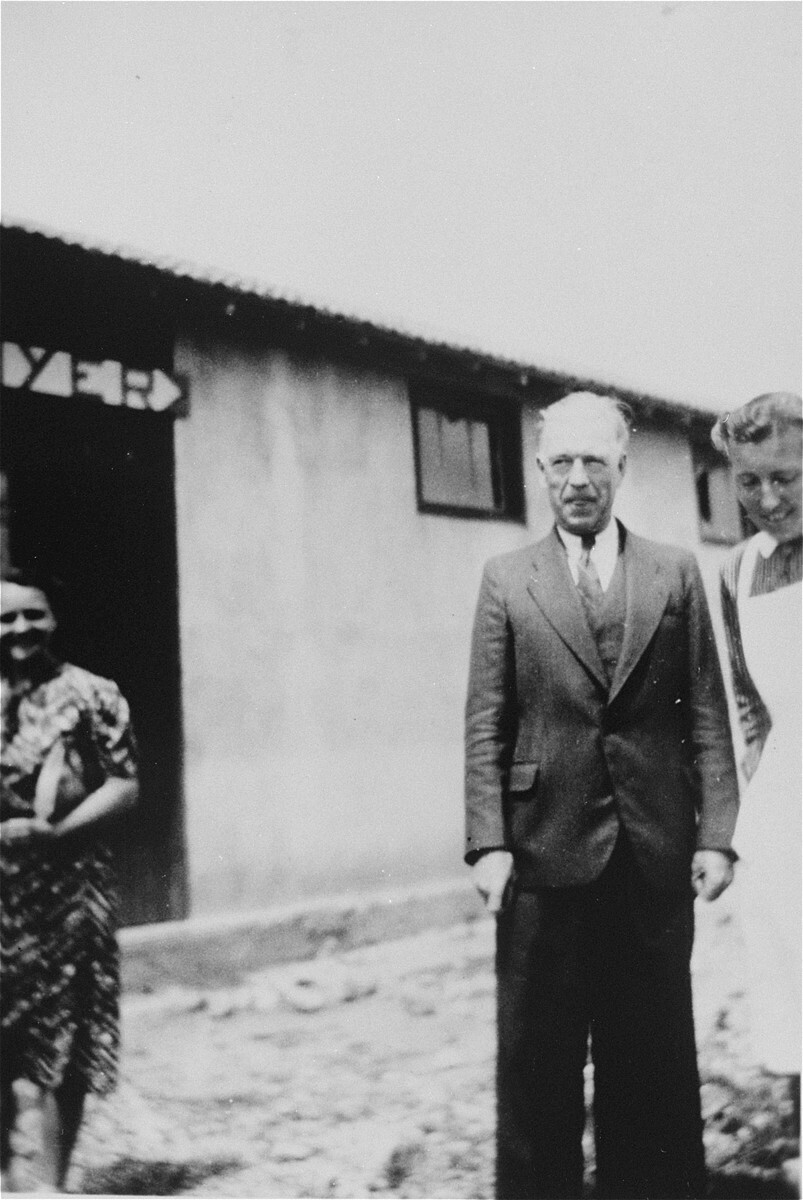
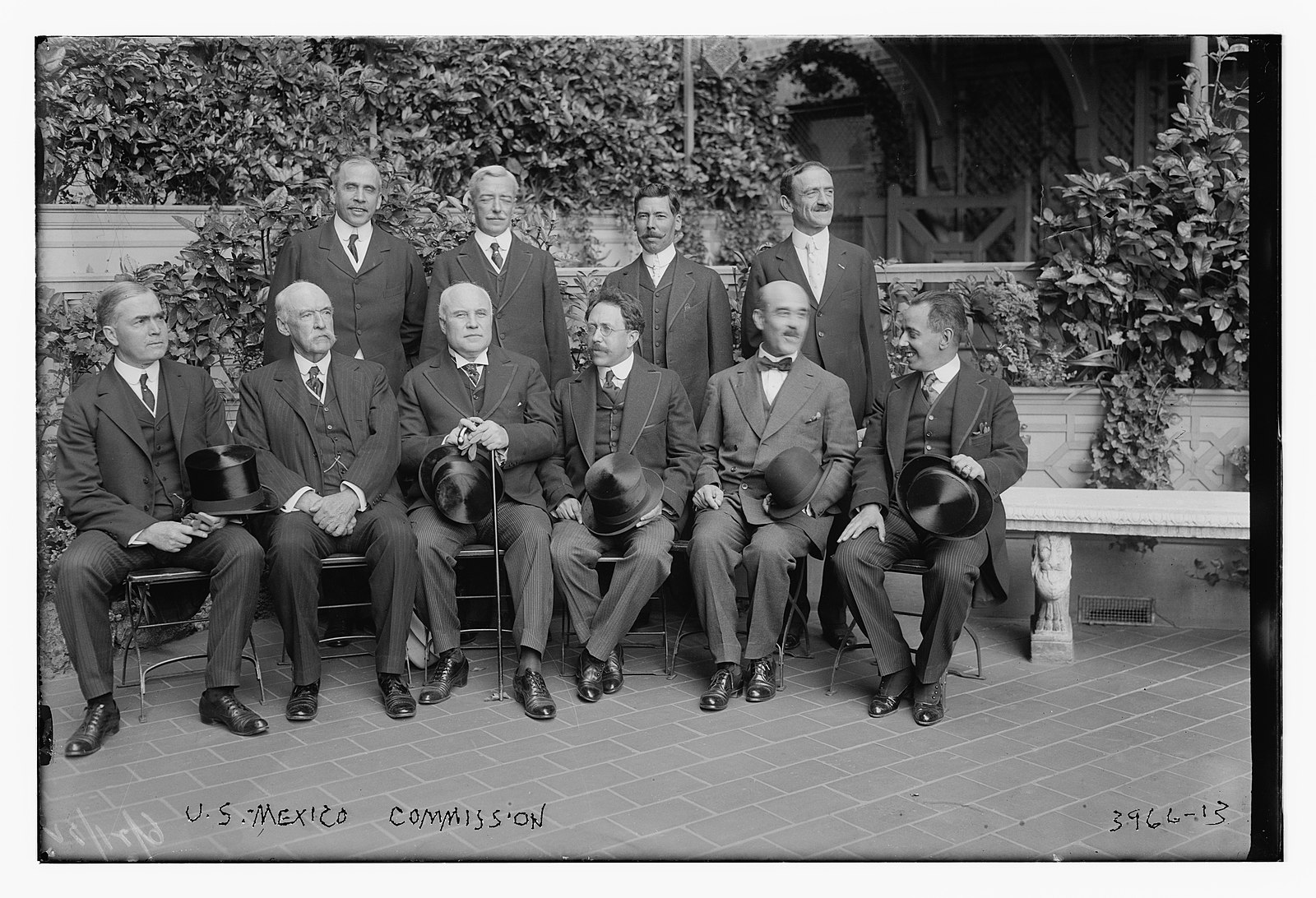
Robert Lansing and John Mott during the Mexico Commission, 1916
Source
Source
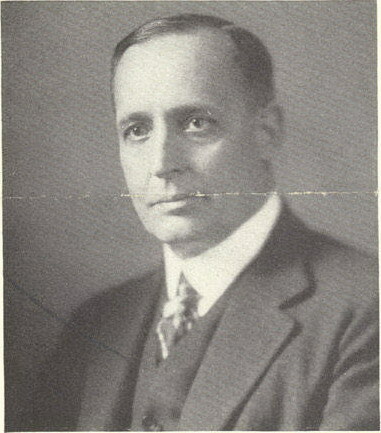
Ethan T. Colton (1872–1952)
Source
Source
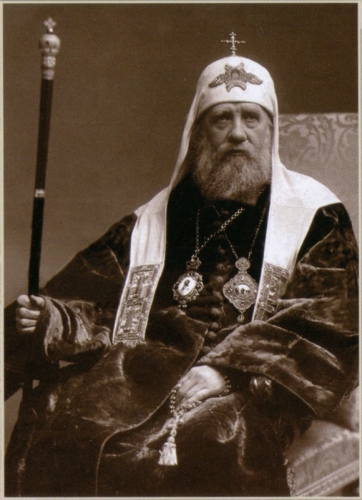
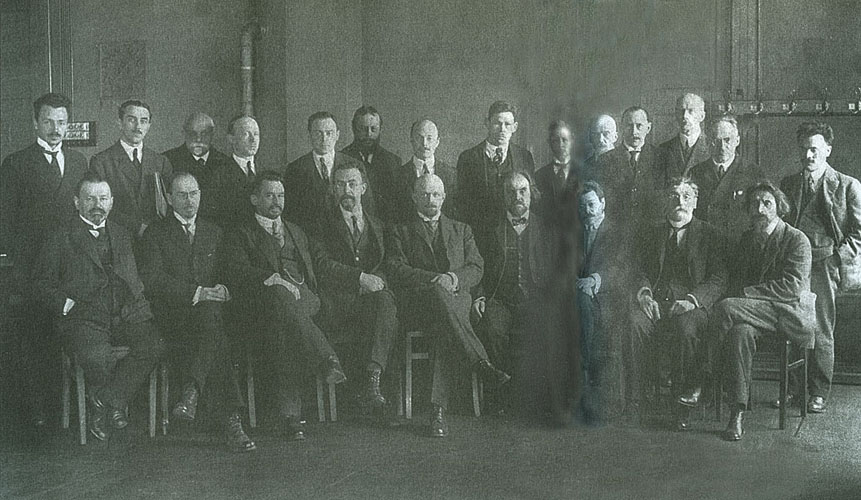
Russian Scientific Institute, 1923
Source
Source
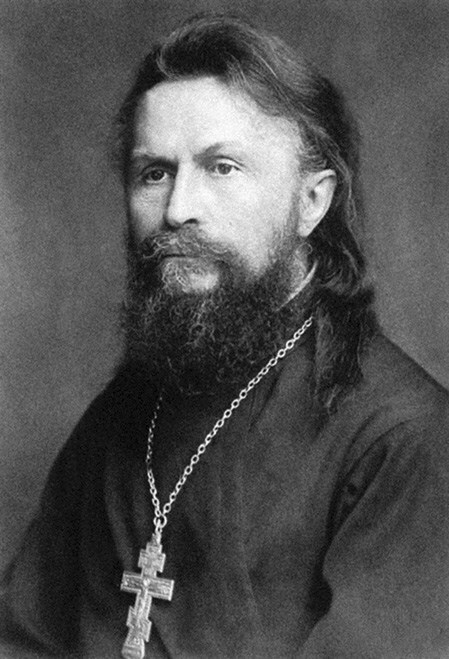
Sergei Bulgakov (1871–1944)
Source
Source
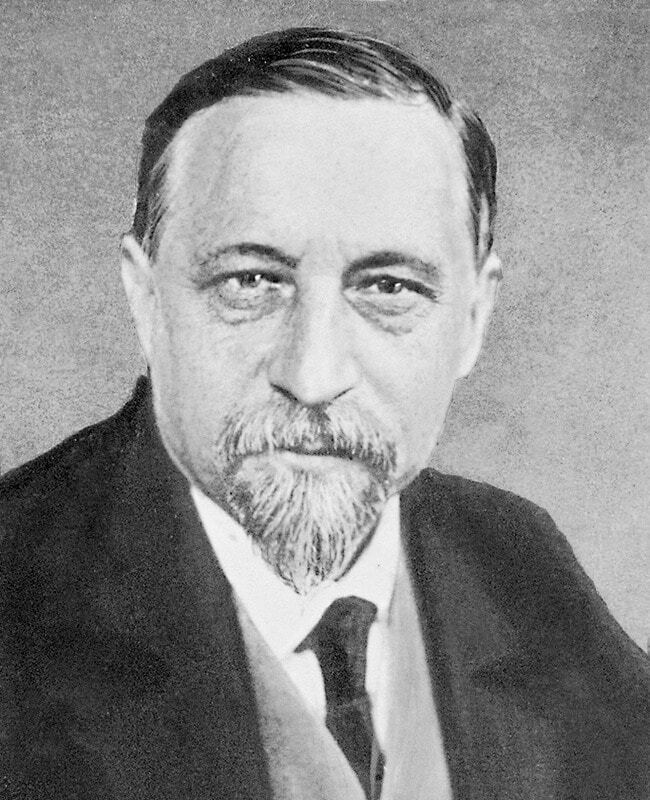
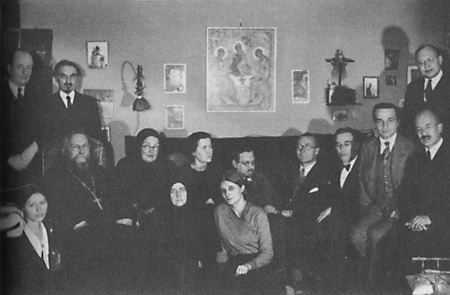
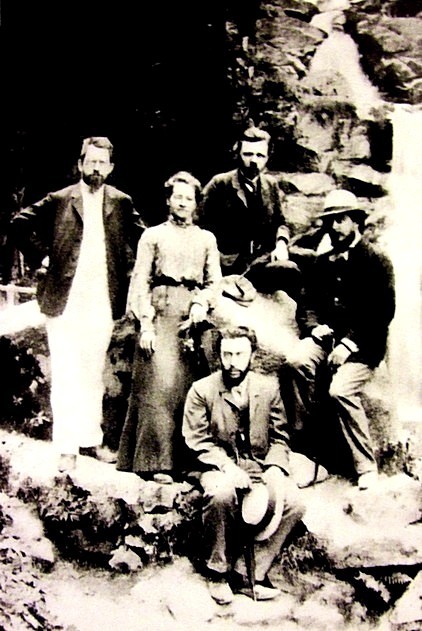
Pyotr Struve and Nikolai Berdiaev in Germany, 1902
Source
Source
Brotherhood of St. Sophia meeting, 1933
Source
Source


Explore the networks, citations, and documents using the buttons on the right

Boy's Cabinet members of The Young Men’s Christian Association, 1923
Source
Source
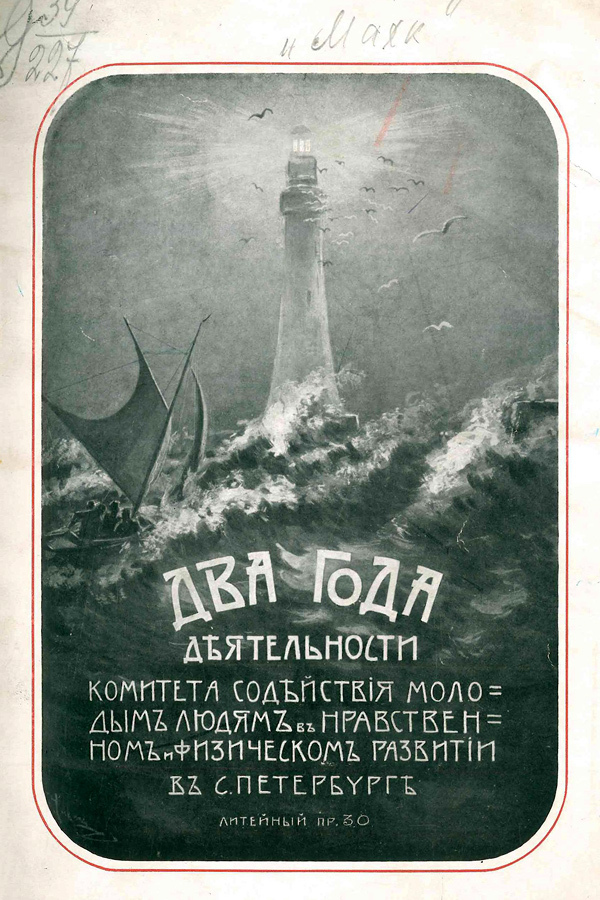
"Mayak",Poster, 1903
Source
Source
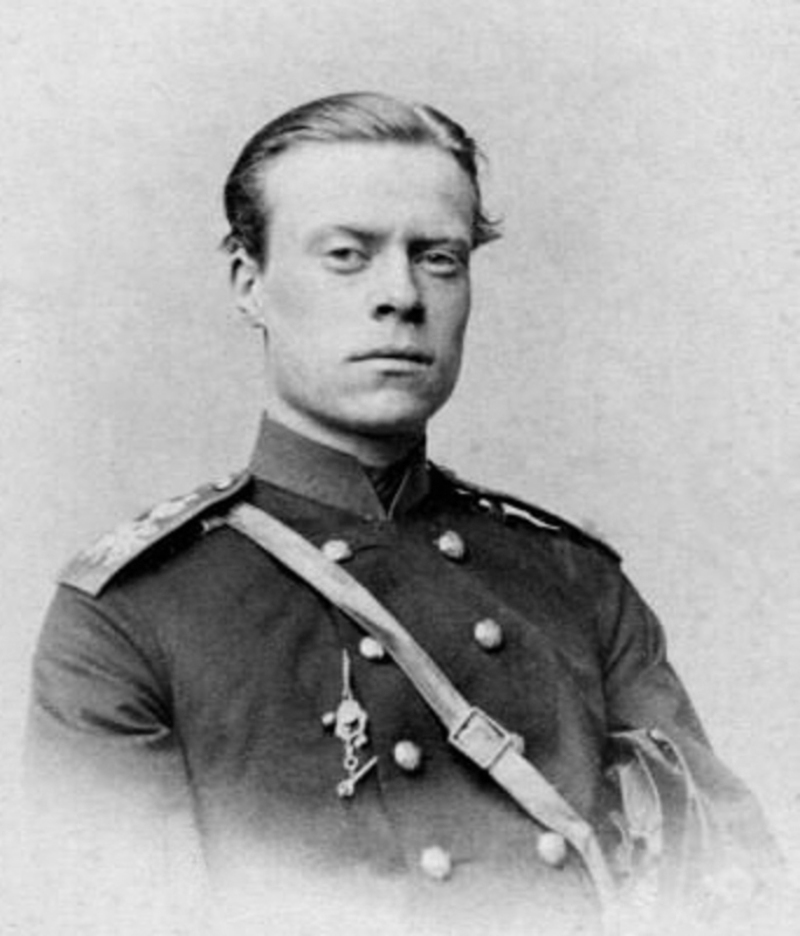
Soldiers in front of Russia's very first YMCA Russia, 1918
Source
Source
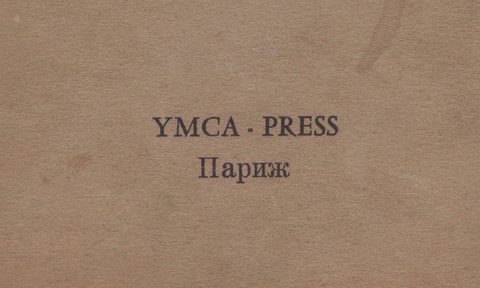
YMCA-Press logo
Source
Source
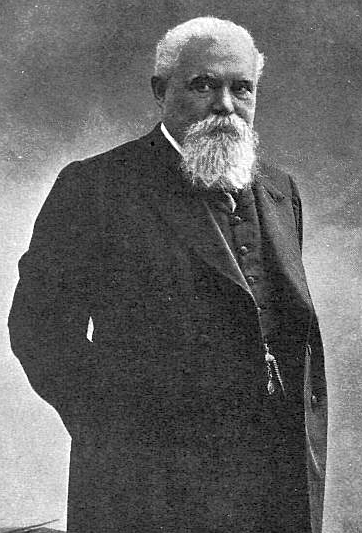
Content Oriented Web
Make great presentations, longreads, and landing pages, as well as photo stories, blogs, lookbooks, and all other kinds of content oriented projects.

Content Oriented Web
Make great presentations, longreads, and landing pages, as well as photo stories, blogs, lookbooks, and all other kinds of content oriented projects.

Content Oriented Web
Make great presentations, longreads, and landing pages, as well as photo stories, blogs, lookbooks, and all other kinds of content oriented projects.
[104] Propas, “The State Department and the Russian Revolution,” 6.
[105] “Paul B. Anderson wrote that in the summer of 1918, ‘We got information from DeWitt Clinton Poole, U.S. Consul General, who realized the YMCA had the biggest contingent of Americans in the country and was the most exposed to vagaries of the revolution.’ In the fall of 1918 Colton clarified that for ‘nearly a year Association secretaries have constituted much the largest American group in Russian territory, as numerous as the Diplomatic, Consular, Publicity, Red Cross and Military Missions combined.’” Miller, The American YMCA, 22.
[106] Matthew Lee Miller, “Pol B. Anderson, Amerikanskiy KHSML I Russkiye Pravoslavnyye, 1900–1940 gg.,” Vestnik SPbGU, Vol. 2, Issue 1, UDK 94(47), 2016, 44, https://core.ac.uk/reader/217172430.
[107] Miller, “John R. Mott,” 83.
[108] Miller, “Pol B. Anderson,” 44.
[109] “National YMCA Hall of Fame,” Springfield College, http://pridenet.springfield.edu/ics/ExtPages/YMCA/View_Inductee.aspx?MemNo=186.
[110] Miller, “Pol B. Anderson,” 44.
[111] “Register of the Ethan Theodore Colton papers,” Hoover Institution Archives, Stanford University, http://pdf.oac.cdlib.org/pdf/hoover/XX380.pdf.
[112] Miller, The American YMCA, 69–70.
[113] Hoover Institution Archives, “Register of the Ethan Theodore Colton papers.”
[114] Miller, “Pol B. Anderson,” 44, quoting C. H. Hopkins, John R. Mott, 1865–1955: A Biography (Grand Rapids: Eerdmans, 1979), 511.
[115] Miller, The American YMCA, 14 ff.
[116] Miller, The American YMCA, 20.
[117] Vladimir A. Popov, “Zabytyy pravednik,” RELIGARE (“RELIGIYA i SMI”), August 18, 2004, http://www.religare.ru/2_10151.html.
[118] Jennifer Polk, Constructive Efforts: The American Red Cross and YMCA in Revolutionary and Civil War Russia, 1917–24 (PhD Thesis, University of Toronto, 2012), 14, https://www.academia.edu/2168817/Constructive_Efforts_The_American_Red_Cross_and_YMCA_in_Revolutionary_and_Civil_War_Russia_1917_24.
[119] “Kautz Family YMCA Archives,” University of Minnesota – Elmer L. Andersen Library, https://quest.library.illinois.edu/RussianManuscripts/Home/Details/431.
[120] “YMCA Russia,” YMCA International – World Alliance of YMCAs, https://www.ymca.int/member/ymca-in-europe/ymca-russia/.
[121] “Istoriya YMCA,” YMCA Ural, https://web.archive.org/web/20190419031809/http://ymcaural.com/history.
[122] “«Vestnik dukha i smysla». V «Russkom zarubezh’ye» proshla konferentsiya, posvyashchennaya vykhodu 200 nomera «Vestnika RKHD»,” Svyato-Filaretovskiy institut, November 20, 2012, https://sfi.ru/sfi-today/article/vestnik-duha-i-smysla.html.
[123] YMCA Ural, “Istoriya YMCA.”
[124] Miller, The American YMCA, 22.
[125] Donald E. Davis and Eugene P. Trani, “The American YMCA and the Russian Revolution,” Slavic Review 33, No. 3 (September 1974): 469–91, 472–473, https://doi.org/10.2307/2494734.
[126] Miller, “Pol B. Anderson,” 44–45.
[127] “Paul B. Anderson Papers, 1909–1988,” Russian & East European Center, University of Illinois, p. 2, https://archives.library.illinois.edu/uasfa/1535054.pdf.
[128] Miller, “Pol B. Anderson,” 45.
[129] “In late 1917 approximately fifty Y[MCA] men remained “at the request of the President in order to show America’s friendship for the Russian people.” The work consisted of community service and aid for Russian POWs returning from Germany and Austria. US intervention in Archangel and Vladivostok led to a recall of some YMCA men by the US government in 1918. Others continued working in Vladivostok until 1923. … In 1925 and 1926 H. D. Anderson served in Moscow as a promoter of physical education. … From 1919 to 1940 Y secretaries assisted Russian refugees in Europe and the city of Harbin in several programs. … A total of 343 American men worked with the YMCA in Russia during the period 1900–1940.” Miller, The American YMCA, 22.
[130] Kenan Heise, “Paul Anderson, 90, Retired YMCA Exec,” Chicago Tribune, July 4, 1985, https://www.chicagotribune.com/news/ct-xpm-1985-07-04-8502130303-story.html.
[131] “Putin nazval naiboleye blizkikh yemu filosofov,” RBC, October 21, 2021, https://www.rbc.ru/rbcfreenews/61719c749a7947e4686fe911.
[132] Miller, “Pol B. Anderson,” 45; Robert Chadwell Williams, Culture in Exile - Russian Emigres in Germany, 1881–1941 (Ithaka & London: Cornell University Press, 1972), 130.
[133] Nikolai Berdiaev, The Philosophy of Inequality: Letters to My Contemners, Concerning Social Philosophy (Berlin: Obelisk, 1923), 12–13.
[134] Williams, Culture in Exile, 249–250.
[135] Karl Schlögel (ed.), Chronik russischen Lebens in Deutschland 1918-1941 (Berlin: Akademie-Verlag, 1999), 136–137.
[136] Williams, Culture in Exile, 250.
[137] Berdiaev, The Philosophy of Inequality, 42.
[138] “Russkiy Nauchnyy Institut v Berline,” Runivers.ru, accessed October 21, 2021, https://runivers.ru/philosophy/lib/docs/6791/439108/.
[139] Schlögel (ed.), Chronik russischen Lebens, 161; Hartmut Rüdiger Peter, “Russischer Wissenschaftler Im Nachrevolutionären Exil In Deutschland: Das Russische Wissenschaftliche Institut In Berlin Und Seine Auflösung Nach Der Machtergreifung Der Nationalsozialisten,” in Mezhdunarodnyy Dialog Istorikov. Rossiya I Germaniya: Problemy Mezhkul’turnogo Vzaimodeystviya (1990–2020) (Lipetsk, 2019).
[140] Runivers.ru, “Russkiy Nauchnyy Institut v Berline.”
[141] “1923 God. 19 Fevralya Pervoye Zasedaniye Uchenogo Soveta Russkogo Nauchnogo Instituta v Berline,” Runivers.ru, July 26, 2012, https://runivers.ru/philosophy/chronograph/154874/.
[142] Gurevich, Istoriya izdatel’stva YMCA-Press, 5 ff.
[143] “YMCA Russian Publishing Work: An Inventory of its Records,” Kautz Family YMCA Archives, University of Minnesota, https://web.archive.org/web/20160304111926/http://special.lib.umn.edu/findaid/html/ymca/yusa0055.phtml.
[144] Gurevich, Istoriya izdatel’stva YMCA-Press, 7.
[145] Christopher Stroop, “‘A Christian Solution to International Tension’: Nikolai Berdiaev, the American YMCA, and Russian Orthodox Influence on Western Christian Anti-Communism, c.1905–60,” Journal of Global History 13, no. 2 (2018), 192, https://doi.org/10.1017/S1740022818000049.
[146] Matthew Miller, “The Russian YMCA Press: Preserver and Patron of Russian Orthodox Culture,” East-West Church & Ministry Report, accessed November 2, 2021, https://www.eastwestreport.org/24-english/e15-3/177-the-russian-ymca-press-preserver-and-patron-of-russian-orthodox-culture.
[147] Vladimir Burega, “‘Prazhskiy period’ zhizni protoiyereya Sergiya Bulgakova (1923–1925),” Pravoslavie, May 26, 2004, http://www.pravoslavie.ru/5240.html.
[148] Nikita A. Struve, Soixante-dix ans d’émigration russe: 1919–1989 (Paris: Fayard, 1996), 39–40.
[149] “L’histoire Du Mouvement,” Action Chretienne Des Etudiants Russes - Mouvement de Jeunesse Orthodox, ACER-MJO, https://www.acer-mjo.org/fr/acer-mjo/un-siecle-d-histoire/l-histoire-du-mouvement.
[150] Stroop, “‘A Christian Solution to International Tension,’” 192.
[151] “Donald Alexander Lowrie,” geni.com, https://www.geni.com/people/Donald-Lowrie/6000000017697472088.
[152] Nikita A. Struve, Bratstvo Sv. Sofii. Materialy i Dokumenty 1923–1939 (Moscow & Paris: Russkiy Put, 2000), 5 ff., http://ivashek.com/ru/texts/theology-texts/570-bratstvo-sv-sofii-materialy-i-dokumenty-1923-1939.
[153] Marc Raeff, Russia Abroad: A Cultural History of the Russian Emigration, 1919–1939 (New York: Oxford University Press, 1990), 91.
[154] M. A. Kolerov, “The Brotherhood of St. Sophia: The ‘Landmarks People’ and the Eurasians (1921–25),” Russian Studies in Philosophy 34, no. 3 (December 1, 1995), 28, https://doi.org/10.2753/RSP1061-1967340326.
[155] Burega, “‘Prazhskiy period’ zhizni protoiyereya Sergiya Bulgakova (1923–1925).”
[156] Burega, “‘Prazhskiy period’ zhizni protoiyereya Sergiya Bulgakova (1923–1925)”; “Bratstvo Svyatoy Sofii,” Antimodernism.ru (blog), March 27, 2013, https://antimodern.ru/sophia-brotherhood/.
[157] Nikolai Berdiaev, Vekhi - Landmarks: A Collection Of Articles About The Russian Intelligentsia (Armonk, New York & London: M. E. Sharpe, 1994), http://archive.org/details/BerdiaevNikolaiVekhiLandmarksACollectionOfArticlesAboutTheRussianIntelligentsia.
[158] Grigory N. Trubetskoy, Gody smut i nadezhd, 1917–1919 (Montreal: Rus, 1981), 19, http://old.st-tver.ru/biblioteka-2/t/610-trubetskoj-g-n/9668-trubetskoj-g-n-gody-smut-i-nadezhd-1917-1919-1981.
[159] Trubetskoy, Gody smut i nadezhd, 19–20.
[160] Paul Avrich, Kronstadt, 1921 (Princeton: Princeton University Press, 2016), 103 ff.
[161] L. Guryev, “Likvidatsiya Zagovora «Natsional’nogo Tsentra»,” Voyenno-Istoricheskiy Zhurnal, no. 3 (1939), http://communist-ml.ru/archives/6688.
[162] Aleksandr Prokhorov (ed.), Great Soviet Encyclopedia, Volume 30 (New York: Macmillan, 1973), 209.
[163] Avrich, Kronstadt, 1921, 104 ff.
[164] W. Bruce Lincoln, Red Victory: A History of the Russian Civil War, 1918–1921 (New York: Simon and Schuster, 1989), 426.
[165] Wolfgang Kasack, “Russkaja literatura v izgnanii / Gleb Struve,” Bibliotheksservice-Zentrum (BSZ) Baden-Württemberg, https://www.bsz-bw.de/depot/media/3400000/3421000/3421308/97_0343.html.
[166] Trubetskoy, Gody smut i nadezhd, 1917–1919, 19; “Trubetskoi (Grigorii Nikolaevich) Papers,” Hoover Institution Library and Archives, 2006, https://oac.cdlib.org/findaid/ark:/13030/kt4g502159/entire_text/.
[167] Alexey A. Kara-Murza, Intellektual’nyye portrety: Ocherki o russkikh politicheskikh myslitelyakh XIX–XX vv., (Мoscow: IPRAS, 2006), 86.
[168] Richard Pipes, Struve: Liberal on the Right, 1905–1944 (Moscow: Harvard University Press, 1980), 391.
[169] “Trubetskoy Grigoriy Nikolayevich (1874–1930),” Religioznaya Deyatel’nost’ Russkogo Zarubezh’ya: Biobibliograficheskiy Spravochnik, accessed January 8, 2022, http://zarubezhje.narod.ru/tya/t_009.htm.
[170] P. E. Kovalevsky, Zarubezhnaya Rossiya. Dopolnitel’nyy vypusk. (Paris, 1973), 83, http://www.vtoraya-literatura.com/pdf/kovalevsky_zarubezhnaya_rossiya_dop_vypusk_1973_text.pdf.
[105] “Paul B. Anderson wrote that in the summer of 1918, ‘We got information from DeWitt Clinton Poole, U.S. Consul General, who realized the YMCA had the biggest contingent of Americans in the country and was the most exposed to vagaries of the revolution.’ In the fall of 1918 Colton clarified that for ‘nearly a year Association secretaries have constituted much the largest American group in Russian territory, as numerous as the Diplomatic, Consular, Publicity, Red Cross and Military Missions combined.’” Miller, The American YMCA, 22.
[106] Matthew Lee Miller, “Pol B. Anderson, Amerikanskiy KHSML I Russkiye Pravoslavnyye, 1900–1940 gg.,” Vestnik SPbGU, Vol. 2, Issue 1, UDK 94(47), 2016, 44, https://core.ac.uk/reader/217172430.
[107] Miller, “John R. Mott,” 83.
[108] Miller, “Pol B. Anderson,” 44.
[109] “National YMCA Hall of Fame,” Springfield College, http://pridenet.springfield.edu/ics/ExtPages/YMCA/View_Inductee.aspx?MemNo=186.
[110] Miller, “Pol B. Anderson,” 44.
[111] “Register of the Ethan Theodore Colton papers,” Hoover Institution Archives, Stanford University, http://pdf.oac.cdlib.org/pdf/hoover/XX380.pdf.
[112] Miller, The American YMCA, 69–70.
[113] Hoover Institution Archives, “Register of the Ethan Theodore Colton papers.”
[114] Miller, “Pol B. Anderson,” 44, quoting C. H. Hopkins, John R. Mott, 1865–1955: A Biography (Grand Rapids: Eerdmans, 1979), 511.
[115] Miller, The American YMCA, 14 ff.
[116] Miller, The American YMCA, 20.
[117] Vladimir A. Popov, “Zabytyy pravednik,” RELIGARE (“RELIGIYA i SMI”), August 18, 2004, http://www.religare.ru/2_10151.html.
[118] Jennifer Polk, Constructive Efforts: The American Red Cross and YMCA in Revolutionary and Civil War Russia, 1917–24 (PhD Thesis, University of Toronto, 2012), 14, https://www.academia.edu/2168817/Constructive_Efforts_The_American_Red_Cross_and_YMCA_in_Revolutionary_and_Civil_War_Russia_1917_24.
[119] “Kautz Family YMCA Archives,” University of Minnesota – Elmer L. Andersen Library, https://quest.library.illinois.edu/RussianManuscripts/Home/Details/431.
[120] “YMCA Russia,” YMCA International – World Alliance of YMCAs, https://www.ymca.int/member/ymca-in-europe/ymca-russia/.
[121] “Istoriya YMCA,” YMCA Ural, https://web.archive.org/web/20190419031809/http://ymcaural.com/history.
[122] “«Vestnik dukha i smysla». V «Russkom zarubezh’ye» proshla konferentsiya, posvyashchennaya vykhodu 200 nomera «Vestnika RKHD»,” Svyato-Filaretovskiy institut, November 20, 2012, https://sfi.ru/sfi-today/article/vestnik-duha-i-smysla.html.
[123] YMCA Ural, “Istoriya YMCA.”
[124] Miller, The American YMCA, 22.
[125] Donald E. Davis and Eugene P. Trani, “The American YMCA and the Russian Revolution,” Slavic Review 33, No. 3 (September 1974): 469–91, 472–473, https://doi.org/10.2307/2494734.
[126] Miller, “Pol B. Anderson,” 44–45.
[127] “Paul B. Anderson Papers, 1909–1988,” Russian & East European Center, University of Illinois, p. 2, https://archives.library.illinois.edu/uasfa/1535054.pdf.
[128] Miller, “Pol B. Anderson,” 45.
[129] “In late 1917 approximately fifty Y[MCA] men remained “at the request of the President in order to show America’s friendship for the Russian people.” The work consisted of community service and aid for Russian POWs returning from Germany and Austria. US intervention in Archangel and Vladivostok led to a recall of some YMCA men by the US government in 1918. Others continued working in Vladivostok until 1923. … In 1925 and 1926 H. D. Anderson served in Moscow as a promoter of physical education. … From 1919 to 1940 Y secretaries assisted Russian refugees in Europe and the city of Harbin in several programs. … A total of 343 American men worked with the YMCA in Russia during the period 1900–1940.” Miller, The American YMCA, 22.
[130] Kenan Heise, “Paul Anderson, 90, Retired YMCA Exec,” Chicago Tribune, July 4, 1985, https://www.chicagotribune.com/news/ct-xpm-1985-07-04-8502130303-story.html.
[131] “Putin nazval naiboleye blizkikh yemu filosofov,” RBC, October 21, 2021, https://www.rbc.ru/rbcfreenews/61719c749a7947e4686fe911.
[132] Miller, “Pol B. Anderson,” 45; Robert Chadwell Williams, Culture in Exile - Russian Emigres in Germany, 1881–1941 (Ithaka & London: Cornell University Press, 1972), 130.
[133] Nikolai Berdiaev, The Philosophy of Inequality: Letters to My Contemners, Concerning Social Philosophy (Berlin: Obelisk, 1923), 12–13.
[134] Williams, Culture in Exile, 249–250.
[135] Karl Schlögel (ed.), Chronik russischen Lebens in Deutschland 1918-1941 (Berlin: Akademie-Verlag, 1999), 136–137.
[136] Williams, Culture in Exile, 250.
[137] Berdiaev, The Philosophy of Inequality, 42.
[138] “Russkiy Nauchnyy Institut v Berline,” Runivers.ru, accessed October 21, 2021, https://runivers.ru/philosophy/lib/docs/6791/439108/.
[139] Schlögel (ed.), Chronik russischen Lebens, 161; Hartmut Rüdiger Peter, “Russischer Wissenschaftler Im Nachrevolutionären Exil In Deutschland: Das Russische Wissenschaftliche Institut In Berlin Und Seine Auflösung Nach Der Machtergreifung Der Nationalsozialisten,” in Mezhdunarodnyy Dialog Istorikov. Rossiya I Germaniya: Problemy Mezhkul’turnogo Vzaimodeystviya (1990–2020) (Lipetsk, 2019).
[140] Runivers.ru, “Russkiy Nauchnyy Institut v Berline.”
[141] “1923 God. 19 Fevralya Pervoye Zasedaniye Uchenogo Soveta Russkogo Nauchnogo Instituta v Berline,” Runivers.ru, July 26, 2012, https://runivers.ru/philosophy/chronograph/154874/.
[142] Gurevich, Istoriya izdatel’stva YMCA-Press, 5 ff.
[143] “YMCA Russian Publishing Work: An Inventory of its Records,” Kautz Family YMCA Archives, University of Minnesota, https://web.archive.org/web/20160304111926/http://special.lib.umn.edu/findaid/html/ymca/yusa0055.phtml.
[144] Gurevich, Istoriya izdatel’stva YMCA-Press, 7.
[145] Christopher Stroop, “‘A Christian Solution to International Tension’: Nikolai Berdiaev, the American YMCA, and Russian Orthodox Influence on Western Christian Anti-Communism, c.1905–60,” Journal of Global History 13, no. 2 (2018), 192, https://doi.org/10.1017/S1740022818000049.
[146] Matthew Miller, “The Russian YMCA Press: Preserver and Patron of Russian Orthodox Culture,” East-West Church & Ministry Report, accessed November 2, 2021, https://www.eastwestreport.org/24-english/e15-3/177-the-russian-ymca-press-preserver-and-patron-of-russian-orthodox-culture.
[147] Vladimir Burega, “‘Prazhskiy period’ zhizni protoiyereya Sergiya Bulgakova (1923–1925),” Pravoslavie, May 26, 2004, http://www.pravoslavie.ru/5240.html.
[148] Nikita A. Struve, Soixante-dix ans d’émigration russe: 1919–1989 (Paris: Fayard, 1996), 39–40.
[149] “L’histoire Du Mouvement,” Action Chretienne Des Etudiants Russes - Mouvement de Jeunesse Orthodox, ACER-MJO, https://www.acer-mjo.org/fr/acer-mjo/un-siecle-d-histoire/l-histoire-du-mouvement.
[150] Stroop, “‘A Christian Solution to International Tension,’” 192.
[151] “Donald Alexander Lowrie,” geni.com, https://www.geni.com/people/Donald-Lowrie/6000000017697472088.
[152] Nikita A. Struve, Bratstvo Sv. Sofii. Materialy i Dokumenty 1923–1939 (Moscow & Paris: Russkiy Put, 2000), 5 ff., http://ivashek.com/ru/texts/theology-texts/570-bratstvo-sv-sofii-materialy-i-dokumenty-1923-1939.
[153] Marc Raeff, Russia Abroad: A Cultural History of the Russian Emigration, 1919–1939 (New York: Oxford University Press, 1990), 91.
[154] M. A. Kolerov, “The Brotherhood of St. Sophia: The ‘Landmarks People’ and the Eurasians (1921–25),” Russian Studies in Philosophy 34, no. 3 (December 1, 1995), 28, https://doi.org/10.2753/RSP1061-1967340326.
[155] Burega, “‘Prazhskiy period’ zhizni protoiyereya Sergiya Bulgakova (1923–1925).”
[156] Burega, “‘Prazhskiy period’ zhizni protoiyereya Sergiya Bulgakova (1923–1925)”; “Bratstvo Svyatoy Sofii,” Antimodernism.ru (blog), March 27, 2013, https://antimodern.ru/sophia-brotherhood/.
[157] Nikolai Berdiaev, Vekhi - Landmarks: A Collection Of Articles About The Russian Intelligentsia (Armonk, New York & London: M. E. Sharpe, 1994), http://archive.org/details/BerdiaevNikolaiVekhiLandmarksACollectionOfArticlesAboutTheRussianIntelligentsia.
[158] Grigory N. Trubetskoy, Gody smut i nadezhd, 1917–1919 (Montreal: Rus, 1981), 19, http://old.st-tver.ru/biblioteka-2/t/610-trubetskoj-g-n/9668-trubetskoj-g-n-gody-smut-i-nadezhd-1917-1919-1981.
[159] Trubetskoy, Gody smut i nadezhd, 19–20.
[160] Paul Avrich, Kronstadt, 1921 (Princeton: Princeton University Press, 2016), 103 ff.
[161] L. Guryev, “Likvidatsiya Zagovora «Natsional’nogo Tsentra»,” Voyenno-Istoricheskiy Zhurnal, no. 3 (1939), http://communist-ml.ru/archives/6688.
[162] Aleksandr Prokhorov (ed.), Great Soviet Encyclopedia, Volume 30 (New York: Macmillan, 1973), 209.
[163] Avrich, Kronstadt, 1921, 104 ff.
[164] W. Bruce Lincoln, Red Victory: A History of the Russian Civil War, 1918–1921 (New York: Simon and Schuster, 1989), 426.
[165] Wolfgang Kasack, “Russkaja literatura v izgnanii / Gleb Struve,” Bibliotheksservice-Zentrum (BSZ) Baden-Württemberg, https://www.bsz-bw.de/depot/media/3400000/3421000/3421308/97_0343.html.
[166] Trubetskoy, Gody smut i nadezhd, 1917–1919, 19; “Trubetskoi (Grigorii Nikolaevich) Papers,” Hoover Institution Library and Archives, 2006, https://oac.cdlib.org/findaid/ark:/13030/kt4g502159/entire_text/.
[167] Alexey A. Kara-Murza, Intellektual’nyye portrety: Ocherki o russkikh politicheskikh myslitelyakh XIX–XX vv., (Мoscow: IPRAS, 2006), 86.
[168] Richard Pipes, Struve: Liberal on the Right, 1905–1944 (Moscow: Harvard University Press, 1980), 391.
[169] “Trubetskoy Grigoriy Nikolayevich (1874–1930),” Religioznaya Deyatel’nost’ Russkogo Zarubezh’ya: Biobibliograficheskiy Spravochnik, accessed January 8, 2022, http://zarubezhje.narod.ru/tya/t_009.htm.
[170] P. E. Kovalevsky, Zarubezhnaya Rossiya. Dopolnitel’nyy vypusk. (Paris, 1973), 83, http://www.vtoraya-literatura.com/pdf/kovalevsky_zarubezhnaya_rossiya_dop_vypusk_1973_text.pdf.